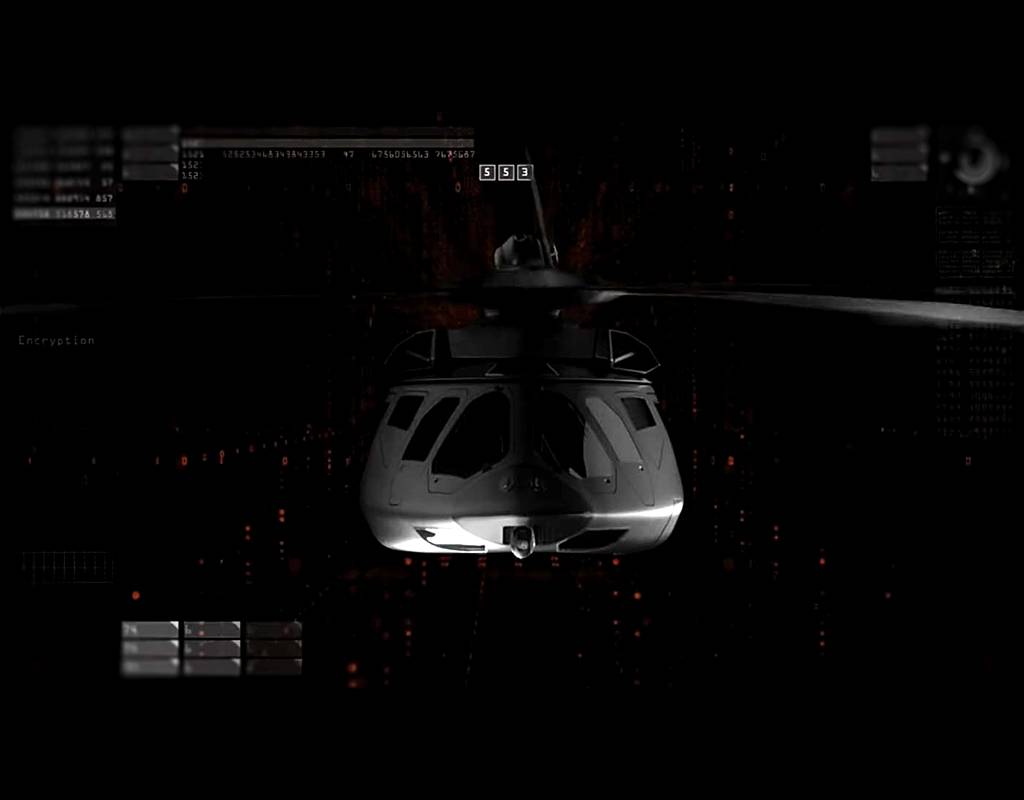
Collins Aerospace's new mission management computer provides leap-ahead processing without taking up weight or space.
An ever-expanding list of flight control and mission management software is available to help frontline helicopter operators accomplish their missions safely and efficiently, but the onslaught of technology requires more powerful computers that don’t weigh down or monopolize space on aircraft.
Collins Aerospace has recognized the need for more powerful processors that can perform the complex computing tasks emerging avionics tech will require while remaining open to future upgrades as new systems become available.
First introduced in 2018 as the “vehicle management computer,” Collins has spent the past three years polishing its design into what is now called “Perigon.” The multicore processor computer now promises to provide 20 times the brain power of existing mission-management computers in the same size box using the same or less power, according to Kim Kinsley, vice president of environmental and airframe control systems at Collins Aerospace, which is owned by Raytheon.
“Since 2018, when we first talked about this, we’ve been working really hard on the design and details development,” Kinsley told Vertical in a recent interview. “We’ve built a working prototype. We’ve been working on integration testing and in 2022, we’re looking forward to completing qualification testing. That’s our target right now.”
Perigon is mathematical term for a 360-degree angle, which Kinsley said “represents the many unique capabilities of the hardware and what it can offer customers.”
Rotorcraft operators — both military and commercial — are the first customers Collins is targeting. The U.S. Army is in dire need of powerful, efficient computers to run the autonomous, fly-by-wire flight controls it wants aboard the Future Vertical Lift family of advanced rotorcraft. But Collins has designed the Perigon computer for use aboard any aircraft, particularly those with complex missions in extreme environments.
“They’re looking forward to capabilities that are well beyond current flight control computers,” Kinsley said. “Think fly-by-wire controls, autonomy, cybersecurity . . . Think about weapons management, vehicle management as well as predictive health maintenance.”

“We like to think of phones these days, they’re pretty complex pieces of hardware,” Kinsley added. “You might want different applications on your phone than I want on my phone. Perigon — far more complicated than a phone — but you get the base and then you can configure your apps to serve what your needs are.”
Everyone from hardcore defense contractors like Northrop Grumman and Lockheed Martin to commercial avionics manufacturers are working on mission systems that can be rapidly upgraded with relatively little hassle or fealty to the computer manufacturer. The U.S. military is demanding all of its next-generation aircraft and weapon systems be designed with open architectures and the trend is seeping into the commercial world, where technological advances in flight controls and avionics are accelerating.
Erickson, for example, is preparing to integrate a version of Sikorsky’s Matrix technology for semi-autonomous and autonomous operation onto its S-64 Air Crane helicopter to lessen pilot workload and improve both the safety and accuracy of the aircraft. Some aerial firefighting outfits are beginning to use night vision goggles to allow nighttime fire suppression while adding autonomy, computer generated synthetic vision, moving maps with full-motion video, systems to help pilots fly through degraded visual environments (DVE) and other technologies to the cockpit.
Aerial firefighting is a target market for Perigon, which can handle the computer processing demands of those various digital systems, Kinsley said. Potential applications for such a computer are as varied as the frontline missions helicopters perform, she said. Law enforcement, helicopter EMS, search-and-rescue or any other aircraft flying critical missions with complex onboard technology can benefit from emerging, more powerful mission management computers.
“We believe the solution is unique on a number of fronts,” Kinsley said. “It’s very, very powerful. It has great flexibility . . . and there is a wide variety of applications this can be used for. Perigon could play a role in upgrading current equipment flying missions where there is DVE and help those pilots perform those functions even better than they do today.”
An aircraft could have more than one Perigon computer installed to control different mission systems, eliminating large, heavy proprietary control boxes and thereby saving limited weight and space aboard the aircraft, Kinsley said.
“Customers also are looking for redundant capabilities within the system,” she said. “Perigon can be highly configurable in such a way that it is duplex or triplex redundant. Having those capabilities, processing power and redundancy is very important for future applications.”
Mission systems that originally ran on several computers installed throughout an aircraft could operate on a single Perigon, reducing the space and weight cost of adding new capabilities to an aircraft, according to Darryl Woods, Collins’ director and general manager for flight controls.
“We saved a little bit of weight, but we’ve added so much more power and capability that when you compare our current flight control computers to Perigon, the box size, it looks a little different but it’s not significantly smaller,” Woods said. “What it affords us is a great upgrade for current systems because the box is about the same size and therefore it has the same form factor.”

To promote adoption by commercial operators, Collins is working toward making the Perigon multicore processors FAA certifiable, which should help facilitate aircraft-level certification once the computers are installed onboard, Woods said.
“The way we are attacking FAA certification and to keep cost down is we are designing it to be FAA certifiable, but we’re not going through the steps to certify it,” Woods said. “We’re creating all the FAA artifacts so that an airframer can use those artifacts in certifying their aircraft with our box on it.”
With avionics and other technologies progressing at a blistering pace, Collins anticipated the need for an open operating system that can be reconfigured on demand. To that end, Perigon was designed as an open system onto which operators can load a variety of compatible third-party apps depending on the mission at hand.
Collins is working with Lynx Software Technologies and using its LYNX MOSA.ic operating system that allows Collins to run its software and installation of third-party apps, Woods said.
”We’re not going to potential third-party application suppliers,” Woods said. “We’re working with the operating system supplier so that we provide the right operating system for anyone to be able to host their applications.”
Will Keegan, CTO of Lynx Software Technologies, said “LYNX MOSA.ic for Avionics provides a simpler foundation for hosting
safety-critical applications by giving developers the ability to integrate software components, with precise control over how these components are deployed on multicore processors.”
Perigon is undergoing testing in an aircraft-level simulation laboratory at Collins’ Windsor Locks, Connecticut, plant. The main lines of effort are testing the computer to the company’s internal specifications and performing thermal testing to ensure the computers do not overheat from the computing load while operating in extreme environments.
“Some of the aircraft we’re targeting are in a high-temperature zone, which drives the thermals up,” Woods said. “We are expecting to finish that type of testing early second quarter, maybe late second quarter of next year and go into our development and qualification testing.”
“The processors that are coming out today are much more efficient even though they are more powerful,” Woods added. “We have that going for us, but when you are driving more powerful, more capable processors, they demand more power and more thermal management. That’s what we’re testing right now, to make sure our power supply can meet the demands of the processors and that the processors can operate in the thermal environments that we’re targeting.”

